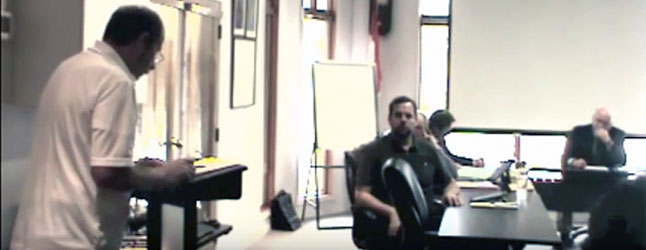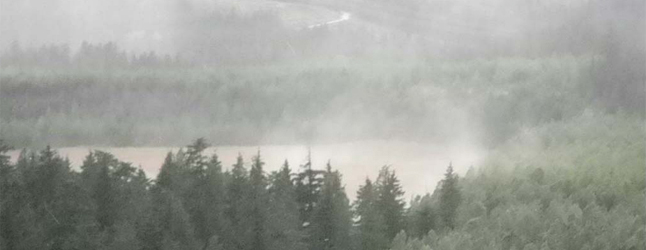
By David F. Rooney
Gravel pit opponent Stuart Andrews made an intense and impassioned pitch to Mayor Mark McKee and City Council on Tuesday, August 25, asking them to halt development of yet another gravel pit off Westside Road.
Andrews bitterly opposes a proposal by Revelstoke Sand & Gravel Ltd. to develop a new pit next to the larger gravel extraction operation started by Interoute in 2010. This new pit has not yet been approved. The land along Westside Road is urban reserve and was, some years ago, regarded as being ideal for light industrial development, perhaps with some kind of housing component.
This is likely going to be a sticky issue for Council and some of them asked questions that clearly showed they want to understand the pros and cons of having yet another gravel pit within City boundaries. Council has told Revelstoke Sand & Gravel it must produce a biologist’s report on the environmental effects of another pit. It also directed municipal staff to to look into all aspects of this issue.
Andrews would probably like to believe that this Council will nix the proposed pit but having watched the two previous City Councils do nothing, despite complaints from the public, he is now rather bitter and jaded.
“This application is for 20 acres, excavating to a depth of 45 feet,” Andrews said in a written presentation. “This equates to 986,785 cubic meters… the management plan for the pit states that the production of sand and gravel from this pit will be 10,000 cubic meters per year. This means that the size of pit requested will be producing sand and gravel for the next 98 years.”
And it won’t be producing just sand and gravel. This kind of mining operation inevitably produces clouds of silica dust, which is regarded by medical experts as a “Class 1 carcinogen,” he said.
Andrews showed a brief WorkSafe BC video about the dangers of silica dust.
“Silica is a common substance found in sand, rock, and building materials such as concrete and brick,” says the introduction to this video. “Cutting, grinding, or drilling these materials releases dangerous crystalline silica dust into the air. This video shows how breathing in silica dust can cause permanent damage to the lungs.”
Please activate the YouTube viewer below to watch that video.
The fact that this video is on a government website is ironic. Despite public complaints and the known dangers posed by crystalline silica dust no one in government appears willing to either halt the opening of gravel pits or take meaningful steps to ensure that effective mitigation measures are in place and are rigorously followed by mine operators. Sand and gravel mining companies are expected to be “self compliant,” which Andrews said effectively means they are free to do what they want.
Besides the known health effects of silica dust, gravel pits can have a disastrous effect on property values.
“On July 23, 2015, I had a long conversation with Katrina LeNoury from the BC Assessment Kelowna office ( she is the lady who gave a presentation to Council on Tuesday, July 14 regarding property values),” Andrews said. “She agreed with me that the Columbia Park subdivision and surrounding area should be reassessed to reflect the health issues from the crystalline silica dust and noise from Interoute’s Westside road gravel pit.
“Josh Sutton from the BC Assessment Cranbrook office has been in contact with me regarding the reassessment for a reduction in property assessment values due to the noise and associated health risks of being constantly covered with a class 1 carcinogen crystalline silica dust. He said that he would be visiting the area in the next few weeks.
“In other areas, the reduction in property values of homes close to a mine… (could be as much as) a 30-40% reduction in value of homes in a one-kilometre radius, 15-20% reduction in value of homes in a one km to two km radius and 5% reduction in value of homes in a two km to three km radius. If my appeal is successful it will have a negative impact on the appraised values of all properties north of the Trans-Canada highway.”
Andrews said any new gravel pit could easily be developed further up Westside Road near BC Hydro’s Revelstoke Dam. Gravel and sand extraction operations up there would have little effect on the Columbia Park residential area.
Please activate the YouTube player below to watch Andrews’ presentation to Council. It begins at the 11:20 mark and ends at 43:45.
You can also click here to read his presentation and click here to view photos of the dust clouds raised by the Interoute operation as seen from Andrews home on the side of Mount Revelstoke just off Highway 23N.



